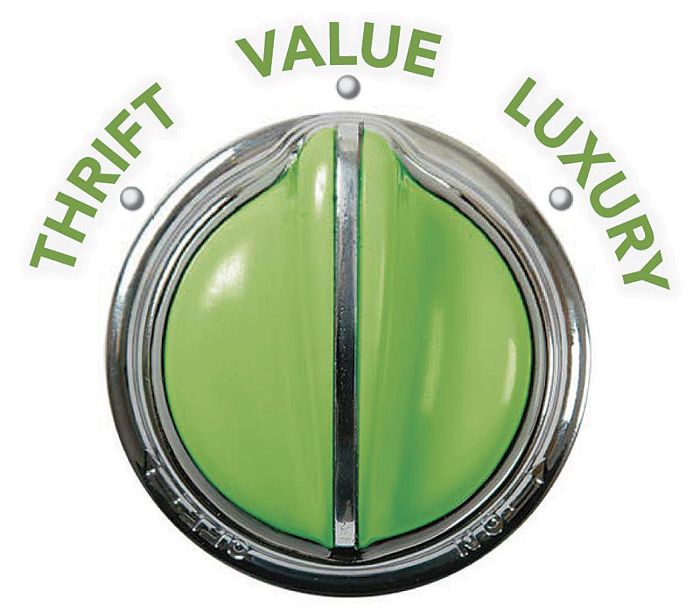Best-Value Appliances
Understand brand marketing to spend wisely on your next refrigerator, range, or dishwasher.

Synopsis: Just how much better is a $1800 dishwasher than a $500 dishwasher? Will a Sub-Zero refrigerator keep your milk colder than one from Whirlpool? In this article, contributing editor Sean Groom investigates how brand marketing impacts your choices—and your budget—when you shop for kitchen appliances. He explains how manufacturers target different consumers with different features, and how pricing is used to keep buyers within a manufacturer’s brand. Taking a close look at the three main categories of kitchen appliances (cooktops, stoves, and ranges; refrigerators; and dishwashers) he spells out what features and performance buyers are likely to find no matter what their price point.
Whether you’re building a new kitchen or updating the appliances in your old one, you’ll quickly discover a dizzying universe of proliferating product lines and models with only slight differences between them—leaving you wondering how to get the best value for your dollar.
The multitude of appliance brands and models available today is no accident. Manufacturers purposely target narrow market segments by both price and cooking interest. Each appliance brand or collection aims at a focus-group-tested and divided market, often with a backstory or character traits assigned. GE, for instance, breaks kitchen users into four types: aspirer (passionate but learning), enthusiast (passionate with ability), laborer (ambivalent with ability), and reluctant (without enthusiasm or ability). The features bestowed on a model depend on the consumer segment it targets, overlaid with a “good-better-best” marketing strategy. For example, Bosch has its 300, 500, and 800 series of appliances. GE has its Profile, Café, and Monogram collections, and it recently added the Artistry series.
Another strategy is for a large holding company to market different brands targeted at different types of customers. Frigidaire and Electrolux, for example, are the “value” and “upscale” brands of the same company. And Whirlpool Corporation sells products under at least five different brands—Whirlpool, Maytag, KitchenAid, Amana, and Jenn-Air.
In the Whirlpool family of brands, Amana is targeted at customers whose first priority is efficiency. KitchenAid is aimed at serious cooks who can’t—or won’t—spring for Whirlpool’s premium Jenn-Air brand. GE has targeted its Café series at aspirers and its Monogram series at enthusiasts. The difference in features is noticeable, although it’s the cheaper Café models that often have more features because they’re aimed at helping people learn to cook. These features make cooking fun, easy, and engaging for the neophyte. Monogram is clearly a descendant of the commercial kitchen. In the words of GE product manager Steven Hopmann, “Monogram is about refined elegance and superlative quality.” Monogram appliances look and feel more robust and cost about 35% more than those in the Café line.
There’s a cachet associated with a luxury brand, so appliance manufacturers tend to position their wares toward the upper end of the market. Even though its three major-model series span the kitchen-appliance category, Bosch claims to target only the top 20% of the market, the idea being that its “good” models pick up where others’ “best” models leave off. Brands also try to appeal to aspirational luxury: LG and KitchenAid position themselves as premium brands, as do Sub-Zero and Wolf, even though they target wildly different budgets.
GE’s new Artistry series bucks this trend somewhat. The idea is simple, affordable appliances with design touches that are pleasantly retro. It will be interesting to see what hold this brand establishes in the market.
For more photos and details, click the View PDF button below:

























